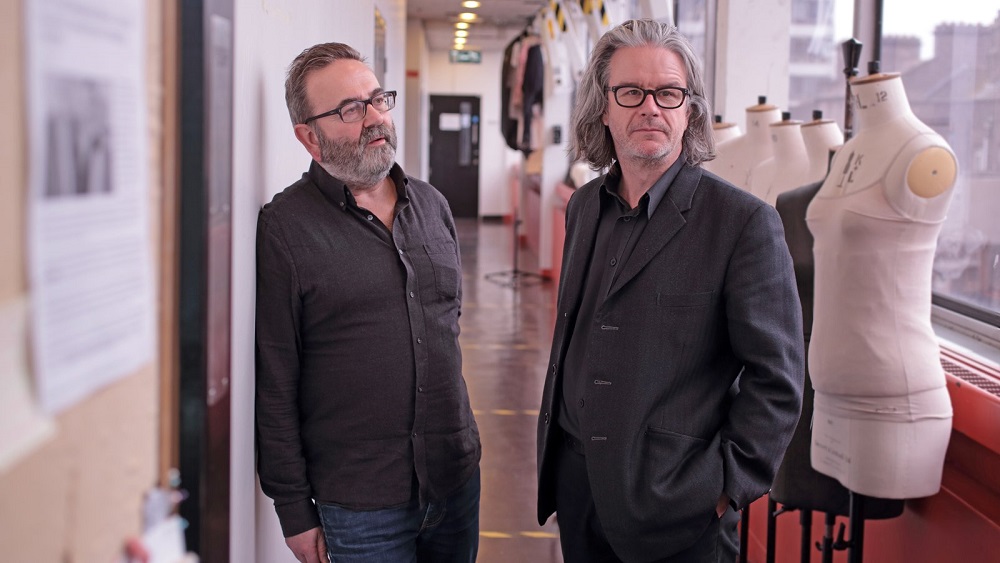By
DAN PENDER

One thing 20 years in the communications business has taught me is that, often, it’s not what you do, it’s how you do it. All too regularly business strategies, brand campaigns and policy changes fail not because of what they include, but because their instigators fail to see the value of communications.
The latest victim is the Abbey Theatre. The spark which ignited this now public squabble was a “letter of concern” from over 300 actors, directors, designers and other artists to the Minister for Arts that questioned, among other things, pay rates and the decreasing number of Irish artists employed by the State-backed national theatre.
The letter was put into the public domain and the media took the bait. Spokespersons worked the radio and TV studios and gave background briefings to print media. Commentators weighed in. In those crucial early hours, a narrative took hold that all was not well at the Abbey. Sentiment and momentum were with the artists.
Proof of this came swiftly when the Arts Council, which administers State funding, announced it had decided to withhold €300,000 of the Abbey’s €7m annual budget “pending confirmation” that it receives assurances from the Abbey about the “quality of employment opportunities for Irish-based artists”. Round one to the artists.
As a communications case study, the Abbey controversy has it all: change, culture, ideology, heritage, politics, financial pressures, employment practices, and a passionate, connected stakeholder community.
It’s also a 115-year-old national institution with a heritage that is an indelible part of Irish history. Put the word ‘national’ in your title and emotive issues like identity and values come into play.
Change
It all started with change. In 2015, the Abbey board appointed Graham McLaren and Neil Murray as joint directors with a mandate for change, which they embraced. The theatre programme was reformed, with a focus on broadening the production blend. Reaching new audiences was prioritised. Improved access for independent artists, with an emphasis on equality and diversity, was key.
By any measurement, McLaren and Murray have delivered. Audience numbers are at their highest since 2010. More than half of this audience growth comprises first-time theatre-goers. Its gender balance is at levels which puts many other State-backed entities to shame.
Despite these achievements, the Abbey’s board and artistic directors are now on the back foot. How did it come to this?
Tactically, the Abbey has failed to effectively convey the positive difference its change strategy is making—for the theatre (artistically and commercially), the country (culturally), and the wider artistic community (financially, collectively, and personally).
Investing expertise and resources in change strategies is what good leaders do. However, the very best leaders ensure that change is underpinned by a thought-through communications strategy that is implemented consistently and proactively for both internal and external stakeholders, and is nimble enough to react to developments.
The very best leaders know that change requires much more than simply outlining what the change is. Change is a journey and you need to bring people with you. You have to address the benefits, challenges, concerns and processes involved; identify those who are likely to resist; and then communicate the change in a way that resonates over the long term.

Inevitably some stakeholders don’t make it to the other side, but the best leaders ensure as many as possible do. That’s not to say that getting a critical mass on board is straightforward (it isn’t, particularly when your audience is ideological and influe-ntial like the Abbey’s), but national theatres, like many State interests, will always be subject to a commercial-versus-artistic tug of war. Ensuring your communications are impactful and meaningful enough to address both audiences is therefore vital.
The outcome of change programmes can often be determined by the actions, or lack thereof, of your stakeholders, not all of which are the same. The Abbey’s biggest stakeholder group is its own creative community. Creatives, not least actors, have an intangible quality that money can’t buy: star power.
While having talented and recognised actors like Ruth Negga, Ciarán Hinds and Sinéad Cusack greatly increases the prospects of media and political traction, they alone aren’t enough to guarantee a change in public opinion or a specific outcome; they must be deployed strategically, as part of a cohesive communications campaign.
Culture
The culture thread running through this controversy is also hugely relevant. McLaren and Murray are not Irish, a fact that some have attempted, subtly and bluntly, to exploit as why the Abbey is “out of touch”.
McLaren and Murray have strong credentials both in their current and previous roles. Like all leaders in high-profile positions, attention and opinion come with the remit. In their mission to deliver a “re-energised” playhouse, ensuring seats are filled when the curtain rises is one thing; but so, too, is tending to the actors and creatives whose work people are there to enjoy, as well as the state agencies and politicians whose funding decisions are central to making it all happen. If a gap emerges here, trouble inevitably follows.
For someone like me, that is the most frustrating thing about the “it’s not what you do, it’s how you do it” mantra. Communications professionals usually see trouble coming long before it arrives (or at least we should!), yet for utterly avoidable reasons, organisations run straight into the storm, rather than act to avoid and/or navigate it successfully.
Future
To its credit, Abbey leadership has moved to respond to current challenges. The signal to engage with critics is an important first step. Uncomfortable as it may be, Abbey leadership will benefit from being seen to take its medicine, but in a manner that doesn’t undermine its credibility.
Tangible measures, effectively communicated, that recognise employment practice concerns, along with impactful insight into the contribution the Abbey makes to the financial well-being and conditions of the entire creative sector, will help to rebuild.
These short-term actions will buy time to take stock and reboot, but for such introspection to have any real value, Abbey leadership must understand that change can only be truly effective when communication is at the heart of long-term strategy.
DAN PENDER
Founder and Managing Director of PR360, Dan’s career spans business, politics and professional representation. He has overseen the agency’s rapid growth, developing a premier client portfolio and a talented team of professionals.

